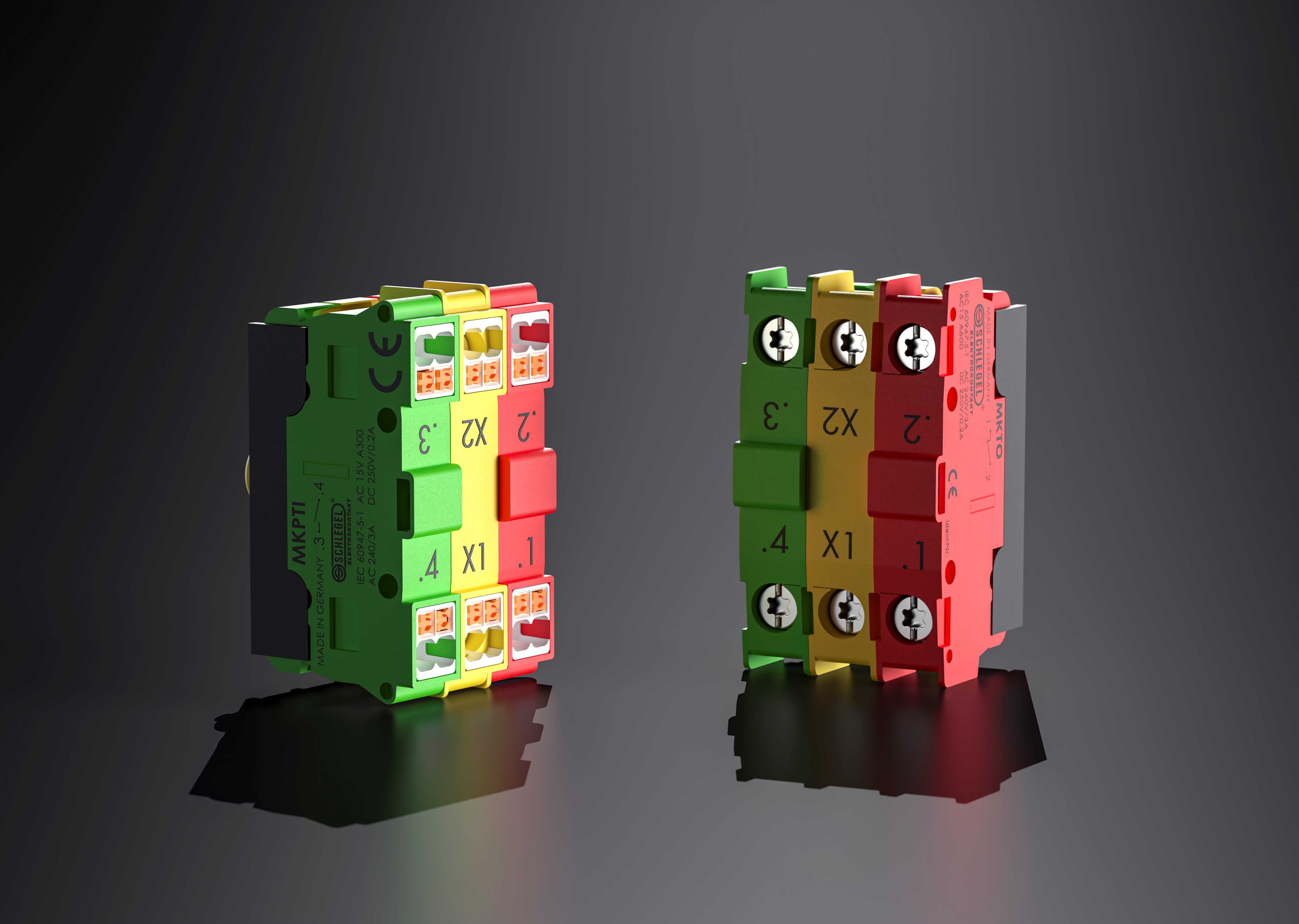

Interview: "If there is vibration, always go for push-in"
What is better, a contact block with screw connection or push-in technology? Both variants have their advantages. Torsten Singer, product manager at GEORG SCHLEGEL, explains when he would use push-in and what he sees as its benefits.
Mr. Singer, SCHLEGEL now offers not only screw connection, but also contact blocks with push-in connection, the MKP, for its MK series. Why?
In contrast to typical connection technologies for contact blocks such as screw or spring load, the push-in connection has crucial benefits, as it requires a significantly less cabling effort and the handling is easier. The cable can easily and effortlessly be placed in the push-in connection without using further tools. Without tools – and this is where improved handling comes into play – means that the worker does not need both hands and thus can hold the cables in one hand and connect easily with the other. During our tests, we found that the time can be reduced by 50 percent in comparison to both other connection technologies. Of course the cable must have a certain buckling resistance in order to be installed without any tools. Rigid wires or those with ferrules can be directly installed without any problems. Flexible wires can, if necessary, be pushed in by activating the so-called "pusher" which opens the contact spring.
Can the push-in connection also be used in an environment with strong vibrations?
Absolutely! If the contact block is exposed to strong vibrations, I would always recommend using a push-in connection. Clamping connections have a much higher resistance against vibrations than screw connections. Also screw connections have their own technologies to make them less vulnerable, however clamping connections already have this resistance without putting in additional effort.
How complex is the loosening of a mounted cable for push-in connections?
The cables can only be loosened by activating the "pusher". The principle and time effort are comparable with those for the spring load connection. There is also no major advantage if you compare it to the screw connection. However, this is logical as the connection is supposed to be as tight and permanent as possible, so the effort to loosen it will always be a bit greater. As a small advantage for the push-in connection, it can be mentioned that no special tool is needed to loosen it. If needed, even a ballpoint pen is sufficient to do so.
In which cases would you recommend contact blocks with screw connection?
To a certain extent, that is a matter of personal preference. Many customers trust the screw connection more than the clamping connection. I would chose the connection type depending on the requirements because the screw connection also has its own advantages, e.g. a very high clamping force when a perfect electrical conductivity is important, or the robustness when the connection is exposed to high loads. We have taken these factors into account for our contact blocks. Thus, the MK with screw connection is designed accordingly: higher performance, larger cable diameter.
How flexible is the MKP in its use?
As for the whole MK series, we have also decided to use a modular system for the MKP. The contact blocks and lamp holders are designed as single modules that can be combined flexibly on the module holder according to customer´s demands and be fixed on an actuator such as a pushbutton or emergency-stop. The flexibility of the system is also reflected in the fact that a contact block combined of the individual modules can be used with various product series of SCHLEGEL.
What about the technical data of the MKP?
For the development of the whole MK series, our main focus was on a compact design. This is also true for the MKP with push-in. Thanks to the well thought-out construction the contact block is only 24.5 mm high, resulting in an extremely small mounting depth. It can be used at an alternating current of 240 V with 3 A and at a direct current from 24 V with 2 A to 250 V and 0.2 A. The lifetime is up to 1 million switching cycles.
